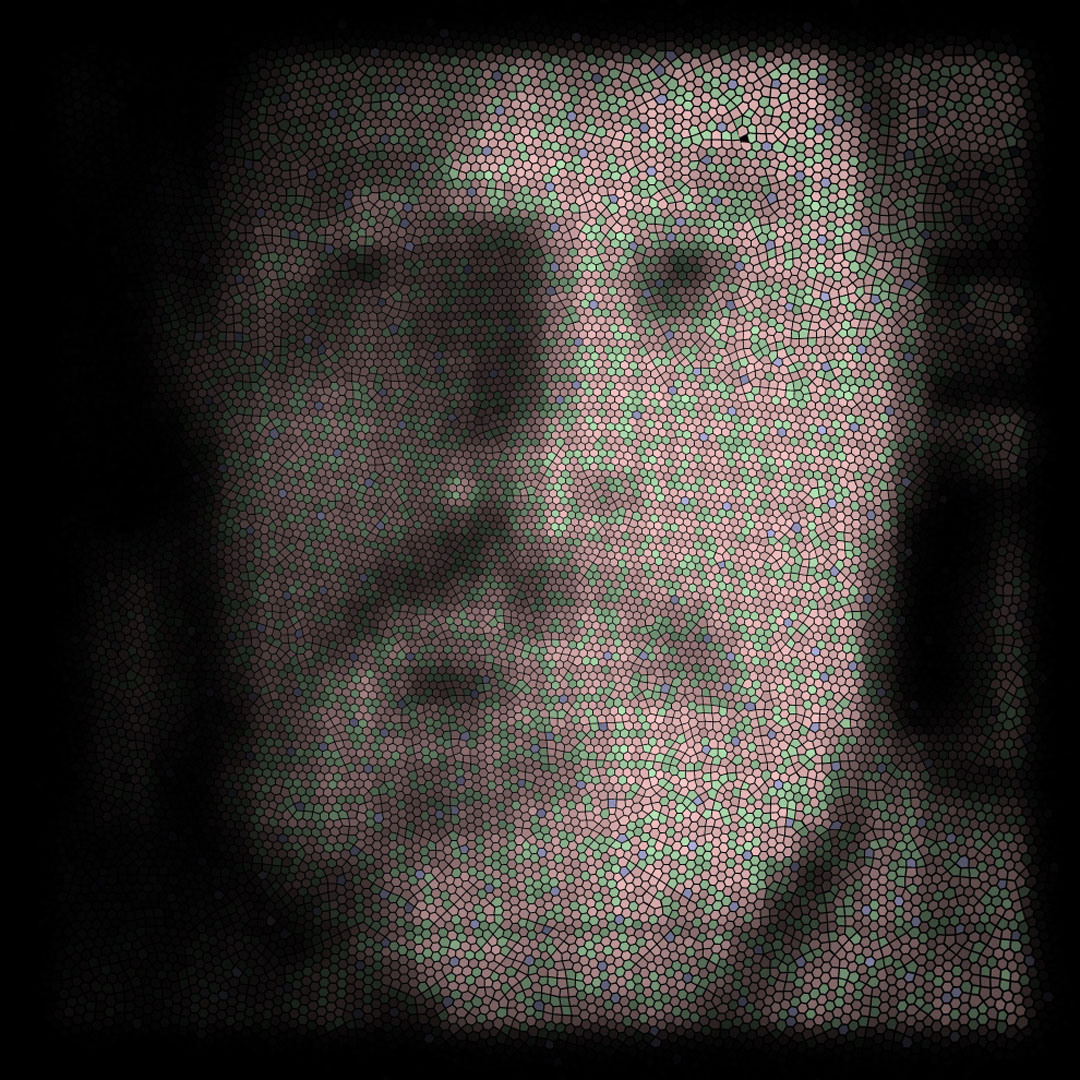“A photon accurate model of the human eye” by Deering
Conference:
Type(s):
Title:
- A photon accurate model of the human eye
Presenter(s)/Author(s):
Abstract:
A photon accurate model of individual cones in the human eye perceiving images on digital display devices is presented. Playback of streams of pixel video data is modeled as individual photon emission events from within the physical substructure of each display pixel. The thus generated electromagnetic wavefronts are refracted through a four surface model of the human cornea and lens, and diffracted at the pupil. The position, size, shape, and orientation of each of the five million photoreceptor cones in the retina are individually modeled by a new synthetic retina model. Photon absorption events map the collapsing wavefront to photon detection events in a particular cone, resulting in images of the photon counts in the retinal cone array. The custom rendering systems used to generate sequences of these images takes a number of optical and physical properties of the image formation into account, including wavelength dependent absorption in the tissues of the eye, and the motion blur caused by slight movement of the eye during a frame of viewing. The creation of this new model is part of a larger framework for understanding how changes to computer graphics rendering algorithms and changes in image display devices are related to artifacts visible to human viewers.
References:
1. Ahumada, A, and Poirson, A. 1987. Cone Sampling Array Models. J. Opt. Soc. Am. A 4, 8, 1493-1502.Google ScholarCross Ref
2. Atchison, A., and Smith, G. 2000. Optics of the Human Eye. Butterworth-Heinemann.Google Scholar
3. Barsky, B. 2004. Vision-Realistic Rendering: Simulation of the Scanned Foveal Image from Wavefront Data of Human Subjects. First Symposium on Applied Perception in Graphics and Visualization, 73–81. Google ScholarDigital Library
4. Barten, P. 1999. Contrast Sensitivity of the Human Eye and Its Effects on Image Quality. SPIE.Google Scholar
5. Van Den Berg, T., and Tan, K. 1994. Light Transmittance of the Human Cornea from 320 to 700 nm for Different Ages. Vision Research, 34, 1453–1456.Google ScholarCross Ref
6. Cook, R. 1986. Stochastic Sampling in Computer Graphics. ACM Transactions on Graphics, 5, 1, 51–72. Google ScholarDigital Library
7. Cook, R. Carpenter, L, and Catmull, E. 1987. The Reyes Image Rendering Architecture. In Computer Graphics (Proceedings of ACM SIGGRAPH 1987), 21, 4 ACM, 95–102. Google ScholarDigital Library
8. Curcio, C., Sloan, K., Kalina, R., and Hendrickson, A. 1990. Human Photoreceptor Topography. J. Comparative Neurology 292, 497–523.Google ScholarCross Ref
9. Deering, M. 1998. The Limits of Human Vision, in 2nd International Immersive Projection Technology Workshop.Google Scholar
10. Dobkin, D., Eppstein, D., and Mitchell, D. 1996. Computing the Discrepancy with Applications to Supersampling Patterns. ACM Transactions on Graphics, 15, 4, 354–376. Google ScholarDigital Library
11. Escudero-Sanz, I., and Navarro, R. 1999. Off-Axis Aberrations of a Wide-Angle Schematic Eye Model. J. Opt. Soc. Am. A, 16, 1881–1891.Google ScholarCross Ref
12. Geisler, W. 1989. Sequential Ideal-Observer Analysis of Visual Discriminations. Psychological Review, 96, 2, 267–314.Google ScholarCross Ref
13. Glassner, A. 1995. Principles of Digital Image Synthesis. Morgan Kaufmann. Google ScholarDigital Library
14. Haslwanter, T. 1995. Mathematics of Three-Dimensional Eye Rotations. Vision Research, 35, 1727–1739.Google ScholarCross Ref
15. Halstead, A., Barsky, B., Klein, S., and Mandell, R. 1996. Reconstructing Curved Surfaces from Specular Reflection Patterns Using Spline Surface Fitting of Normals. In Proceedings of ACM SIGGRAPH 1996 23, Annual Conference Series, 335–342. Google ScholarDigital Library
16. Hennig, M, Funke, K., and Wörögtter, F. 2002. The Influence of Different Retinal Subcircuits on the Non-linearity of Ganglion Cell Behavior. The Journal of Neuroscience, 22, 19, 8726–8738.Google ScholarCross Ref
17. Lakshminarayanan, Raghuram, A., and V, Enoch, J. 2003. The Stiles-Crawford Effects. Optical Society of America.Google Scholar
18. Mahajan, V. 2001. Optical Imaging and Aberrations: Part II Wave Diffraction Optics. SPIE.Google Scholar
19. Martinez-Conde, S, Macknik, S. and Hubel, D. 2004. The Role of Fixational Eye Movements in Visual Perception. Nature Reviews: Neuroscience, 5. March.Google Scholar
20. Oyster, C. 1999. The Human Eye: Structure and Function. Sinauer.Google Scholar
21. Rodieck, R. 1998. The First Steps in Seeing. Sinauer.Google Scholar
22. Roorda, A., Metha, A., Lennie, P, and Williams, D. 2001. Packing Arrangements of the Three Cone Classes in Primate Retina. Vision Research, 41, 1291-1306.Google ScholarCross Ref
23. Roorda, A., and Williams, D. 1999. The Arrangement of the Three Cone Classes in the Living Human Eye. Nature, 397, 520–522.Google ScholarCross Ref
24. Steinman, R. 1996. Moveo Ergo Video: Natural Retinal Image Motion and its Effect on Vision. In Exploratory Vision: The Active Eye. M. Landy et al., Ed., Springer Verlag, 3-49. Google ScholarDigital Library
25. Stockman, A., Sharpe, L., and Fach, C. 1999. The spectral sensitivity of the human short-wavelength cones. Vision Research, 40, 1711–1737.Google ScholarCross Ref
26. Stockman, A., and Sharpe. 2000. Spectral sensitivities of the middle- and long-wavelength sensitive cones derived from measurements in observers of known genotype. Vision Research, 39, 2901–2927.Google ScholarCross Ref
27. Stockman, A., and Sharpe, L. 2004. Colour & Vision Database. http:// cvrl.ucl.ac.uk/.Google Scholar
28. Thibos, L. 2000. Formulation and Sampling of the Retinal Image. In Seeing, K. De Valois, Ed., Academic Press, 1–54.Google Scholar
29. Tyler, C. 1997. Analysis of Human Receptor Density, in Basic and Clinical Applications of Vision Science, Ed. V. Kluwer Academic Publishers, 63–71.Google Scholar
30. Wyatt, H. 1995. The Form of the Human Pupil. Vision Research, 35, 14, 2021–2036.Google ScholarCross Ref




